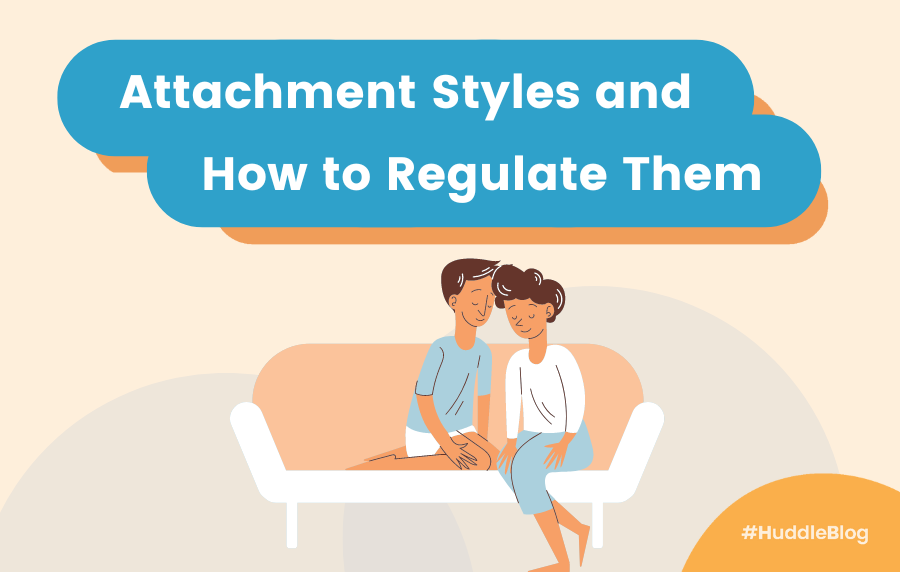Secure Attachment
A good fraction (about 50-60%) of us have a secure attachment style. People in this category find contentment within themselves and navigate the world with a strong understanding of themselves. They tend to have clear boundaries and are comfortable communicating their feelings, wants and needs. With this in mind, they are able to form meaningful connections. There exists a healthy level of trust between partners. They assume a positive worldview of themselves and their partner that is built on deep trust.
Avoidant Attachment
Adults with avoidant attachment find it difficult to express their feelings, wants and needs. Often using humour or sarcasm to deflect the attention away from having to confront these uncomfortable topics. They prefer to keep problems to themselves or focus on things they can control while letting the problem resolve on its own. In some cases, they deliberately shut down their emotions in an attempt to find emotional safety and avoid expressing their vulnerability.
The faulty perspective of self; they often feel that they have to rely on themselves all the time and they don’t need any help. Only they can find their way out because it is hard to find someone they trust.
These types of avoidant character traits could have stemmed from being neglected during childhood, a bad break up or trauma from past relationships. Childhood trauma isn’t the result of being hurt. It is the result of being left alone to deal with the hurt. This creates a false understanding of how to deal with difficult emotions. No one was there for them when they had to go through these painful events and this is how they have always known to process it.
Negative catchphrases from this category:
“Just leave me alone”
“Nah, it’s nothing. I can deal with it on my own.”
“I’m fine.”
How to self-regulate?
- Having an awareness of where your need for avoiding emotions stemmed from and having compassion for what you’ve gone through in the past.
- Understanding your partner’s needs for you to express your feelings. They are not prying or disregarding your privacy. They could be trying to connect with you. It’s just not in a way that you’re used to so you have to work on trying to meet in the middle.
- Challenge your perception of yourself and others.
- Your need for your personal space and alone time is of high priority. Learn to communicate with your partner about it. Don’t just pack up and leave without notice.
How can you improve your communication?
“I appreciate you for being there for me during this difficult time. I just need some time alone to sort through my thoughts and I promise we will talk about this tonight.”
“I sense that things are getting heated. Can we take 10 minutes to cool off before revisiting this conversation?”
Anxious Attachment
People in this category find it difficult to be alone and is highly dependent on their partner for emotional stability. When in a relationship, pressure is being put on the partner to validate their self-worth. They require constant reassurance from others due to their negative self-talk and perceptions of themselves. Internal conflicts tend to cloud their mind as it can be challenging to control emotions and find a strong foothold on their emotional boundaries. Generally, adults with anxious attachment styles have the fear of being rejected and also a fear of abandonment. These fears may project themselves in the form of intense jealousy and constant suspicion of their partner. Certain childhood experiences may play a role in the development of this attachment style. This includes being isolated or separated from our primary caregiver, abuse or mistreatment in the household. Parents who fluctuate between moods and are inconsistent in their parenting can lead to the child feeling confused and in constant distress. They may develop clinginess and be needy to get the comfort and attention they need.
We often find people in this category taking on the role of the “fixer” or “caretaker” in the relationship. It is easier for them to attend to the needs of others than to themselves.
Catchphrases from this category:
“I don’t know how I can continue living if my partner leaves me.”
“He’s probably cheating on me right now.”
“I know they don’t love me anymore.”
How to self-regulate?
- Understand how your attachment style plays out in different scenarios and modify your behaviour.
- Practice open-mindedness and try to see other alternative interpretations of the situation other than the automatic response that you have.
- Communicate your attachment style with your partner so they are more empathetic towards your emotions.
- Challenge your self-perception and need for external validation.
- Learn to enjoy spending quality time with yourself.
How to improve your communication?
“I know I may sometimes overanalyse the situation. Could you hear my thoughts and let’s work this out together?”
“These are the things that make me feel appreciated and valued in this relationship. ___________”
“It would be great if you can show your love through these ways.”





